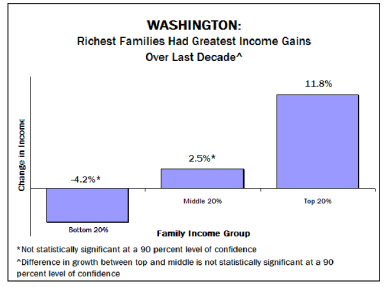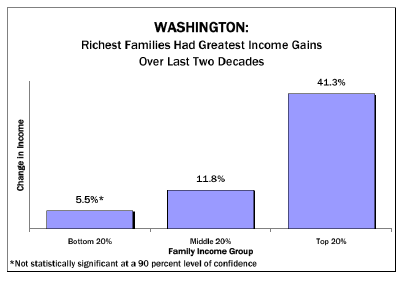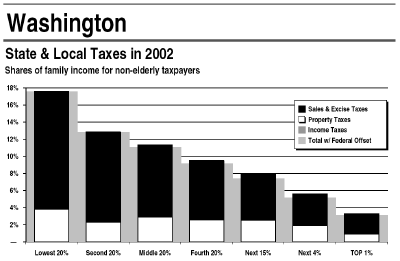Washington state’s business, media and political establishment are often breathtaking in their lack of boldness, so I guess it should come as no surprise that, faced with a nearly unprecedented economic and budgetary crisis that has finally ripped the mask off our decades-old structural revenue deficit, the few calls for real change are being shouted down with deafening cries of “No we can’t!”
Take for example today’s Seattle Times editorial endorsing a 30% tuition increase over two years to help offset dramatic funding cuts. Yes, I agree that tuition “should rise significantly to preserve student access, quality and years of progress toward preparing a sophisticated work force,” and without a doubt, these “whopper tuition increases” are somewhat mitigated by the fact that our state schools are an absolute “bargain compared with peer institutions.” And it’s hard to argue against the notion that, as painful as it might be, given the size of the impending funding cuts, “it would be much worse without the tuition jump.”
But nowhere in the editorial did the Times mention anything about financial aid. Not once.
And then there’s the news today that a temporary sales tax increase is once again gaining traction, a week after dreadful polling convinced most lawmakers that such a ballot measure would be virtually dead on arrival. The solution? No, our special Olympians aren’t rallying around an innovative high-earners income tax (which actually polls well), but instead, are coming back with a smaller, third of a cent sales tax increase proposal in the hope that voters might reluctantly swallow this less painful pill.
You know, conventional wisdom says that an income tax is a nonstarter, whatever fairness or simple math or recent polling says, so why even bother to go there?
The problem is, both these solutions, the tuition and the sales tax hikes, are half-measures that may make the budget easier to balance in the short term, but do absolutely nothing to address our long term problems. And both solutions place their financial burden solely on the backs of those who can least afford it. Both solutions, on their own, only make our revenue system less fair and less stable, and in the long run, will only serve to undermine working class Washingtonians’ faith in the ability of our state government to adequately meet their needs.
Increase tuition and fees by $3000 a year, and our schools will still remain a bargain compared to “peer institutions,” but without a commensurate increase in financial aid, many of our state’s low and middle income students will be priced out of an opportunity to attend a four-year university. And if voters cooperate and agree to temporarily raise the sales tax a mere third of a cent on the dollar, we’ll save some crucial health care services now… only to watch them trickle away over time once the increase sunsets and the steady erosion of our state government’s purchasing power continues unabated.
Now, in this time of crisis, we have the opportunity to ask voters to grit their teeth and join us in embracing real change… and all we seem to get out of our so-called leaders are half measures.
Well, personally, I’m tired of half-measures, and morally conflicted about continuing to join the current Democratic establishment in fighting half the battle, when it has become increasingly apparent that they will never fulfill their promise to join me in fighting the other half. Long term revenue adequacy can never be achieved without tax fairness, and the refusal (with few notable exceptions) to publicly acknowledge this simple truth, undermines our ability to achieve either.



